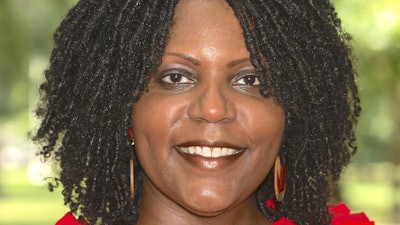On March 7, Dr. Shaun Harper, university professor, provost professor of education, business and public policy, and the founder and executive director of the USC Race and Equity Center, was watching a livestream from the U.S. House of Representatives Committee on Education and the Workforce, titled “Divisive, Excessive, Ineffective: The Real Impact of DEI on College Campuses.”
Committee member U.S. Rep. Burgess Owens, a Republican from Utah quipped: “Today’s hearing addresses a long growing cancer that resides in the hearts of American academic institutions.” Owens called diversity, equity and inclusion initiatives “demeaning and racist.”
 Dr. Toby S. Jenkins
Dr. Toby S. Jenkins
“The more I watched, the more inspired I became to do something,” he said in an interview with Diverse.
Seeing the importance of detailing the clear research and evidence that support DEI and its significant applications within the academy, Harper and 11 other scholars penned essays that have been assembled in a new report titled, “Truths About DEI on College Campuses: Evidence-Based Expert Responses to Politicized Misinformation.” Fact sheets called “Campus Truths,” are interspersed throughout the report, which cites data and facts about various institutions and findings.
“We value evidence over anecdotes. We value democracy over divisiveness,” wrote Harper, who set out on the project to debunk the myths.
“DEI initiatives aim to bring students and employees together to learn from each other’s differences and to co-create inclusive campus environments,” the report notes.
Each author wrote from his or her field of expertise but emphasized that colleges are not monolithic.
“It is reckless and irresponsible for Congresspersons and so-called expert witnesses to make sweeping generalizations about thousands of institutions that they know nothing about,” said Harper.
The USC Race and Equity Center said that seventy-seven percent of participants who were anonymously surveyed said that they are not satisfied with the racial composition of the faculty at their institution.
Prior to becoming a faculty member and administrator, Dr. Toby S. Jenkins, a professor in the College of Education at the University of South Carolina, spent 10 years in DEI leadership roles at the University of Maryland and Penn State University. More than two decades ago, she ran a program at Maryland that brought together the Black Cultural Center and Hillel (Jewish campus organization) to plan an alternative spring break in which they took students to Memphis, Tennessee, to explore the history of Jewish and Black activism during the 1950s and 1960s.
In her essay, Jenkins cites standards established by the National Association of Diversity Officers in Higher Education, which recently concluded their annual conference in Seattle last week.
“I think one of the misconceptions is that DEI professionals are just out there on their own with no kind of guidance, expectations or sense of accountability to actually do DEI in a professional way,” said Jenkins. “The national organization that leads the DEI officers in higher education has a set of standards that have been vetted and developed over the course of many years. They’re always continuing to refine them. They guide the expectations of DEI practice.”
In the report, Jenkins wrote, “DEI standards require professionals to help remove unfair barriers and exclusionary practices. DEI initiatives do not create exclusion, they exist to promote inclusion.”
Jenkins acknowledged that not all institutions have adequate funding to fully implement DEI initiatives. “There may be some places where there are gaps, where there are communities or cultures that haven’t been addressed or attended to yet because they’re still trying to build,” she said.
 Dr. Liliana M. Garces
Dr. Liliana M. Garces
“They promote a mischaracterization of the initiatives in a way that leads to a disruption in our education system,” Garces said.
The way that she sees it, DEI programming helps faculty members become better equipped to address the impediments for productive interactions in their classrooms.
“At the heart of these policies is bettering the goals of higher education,” Garces said. “It contributes to both a high-quality education for students and also provides the type of training that is going to enhance our multi-racial democracy.”
In his essay, Harper cited his two decades of experience as a tenured faculty member at three major research universities. In addition to being a researcher, practitioner, public intellectual, and professor who teaches DEI-focused courses, he has twice testified before Congress. He estimates that no more than 2% of full-time DEI professionals do their work in divisive ways. The body of scholarship around DEI is extensive.
“I’m not speaking just from my own research, but from the research of all these incredibly credible scholars,” Harper said. “DEI professionals help students recognize the value and learn how to collaborate across races, across cultures in such important ways.”















